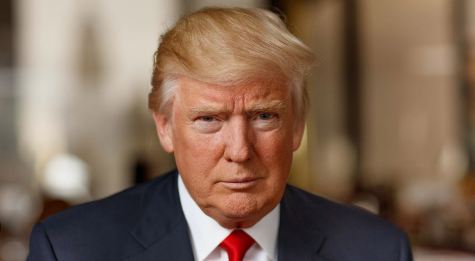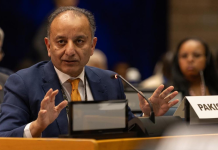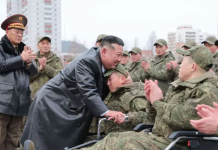Beyond trade, Pakistan’s geographic centrality remains indispensable to U.S. interests. Afghanistan, though no longer a primary U.S. military theater, still looms large in Washington’s strategic thinking
Centreline Report
The relationship between the United States and Pakistan has long been a rollercoaster of strategic necessity, punctuated by periods of deep mistrust. However, the tenure of President Donald Trump, particularly his second term, has seen a remarkable shift, with a conspicuous warming of ties that contrasts sharply with his earlier public criticisms. This pivot is not rooted in altruism, but in a series of calculated, transactional moves driven by geopolitical expediency, regional dynamics, and economic self-interest.
Trump’s “kindness” towards Islamabad, particularly evident in recent high-level meetings and favorable trade arrangements, is fundamentally a reflection of his transactional foreign policy approach. Washington has recently concluded a trade deal with Pakistan and shown keen interest in developing Pakistan’s mineral wealth and its claimed “massive oil reserves.” For an administration laser-focused on business, resource security, and energy diversification, the promise of new, significant, and potentially fast-tracked sources of energy and rare minerals is too attractive to ignore. Lower tariffs on Pakistani exports, compared with regional rivals like India, further sweeten the deal.
Beyond trade, Pakistan’s geographic centrality remains indispensable to U.S. interests. Afghanistan, though no longer a primary U.S. military theater, still looms large in Washington’s strategic thinking. A stable but pliable Afghanistan is essential for preventing the re-emergence of terrorist sanctuaries and for maintaining a regional foothold. Pakistan’s influence over Afghan factions, coupled with its ability to facilitate or obstruct U.S. access to the region, makes Islamabad a crucial partner.
By courting Pakistan, Trump ensures that Washington retains a back channel into Afghanistan—whether for counterterrorism cooperation, intelligence sharing, or as leverage against other actors like Russia and Iran who seek to fill the void left by America’s drawdown. In this sense, Trump’s pivot is both a hedge and an insurance policy, ensuring U.S. relevance in a volatile neighborhood.
Another layer in this recalibration is Iran. U.S. hostility toward Tehran has only intensified, with sanctions, diplomatic isolation, and military posturing forming the core of Washington’s approach. Pakistan’s proximity to Iran, coupled with its longstanding ties to the Gulf monarchies, makes it a potential partner in containing Iranian influence.
While Islamabad has historically walked a fine line between Riyadh and Tehran, Trump sees value in nudging Pakistan closer to the Saudi-led security framework. The recently signed Pakistan-Saudi Arabia Defence Agreement reinforces this dynamic, offering Washington indirect leverage over Gulf security through Islamabad’s growing role as a “net security provider” in the Muslim world.
In Trump’s calculus, a Pakistan aligned more closely with Riyadh weakens Tehran’s ability to expand influence westward and further isolates Iran diplomatically—a goal squarely in line with U.S. strategic aims.
Perhaps the most consequential backdrop to Trump’s pivot is China. Pakistan has been a cornerstone of Beijing’s Belt and Road Initiative through the China-Pakistan Economic Corridor (CPEC). For years, Washington dismissed Pakistan as firmly in China’s orbit. Yet Trump’s approach reveals a subtle recognition: engaging Pakistan does not mean dislodging it from China, but rather complicating Beijing’s monopoly over Pakistan’s loyalties.
By dangling trade incentives, resource investment, and political recognition, Trump hopes to create wedges that limit Beijing’s ability to use Pakistan as an uncontested strategic asset. Even modest successes—such as drawing Pakistan into U.S.-brokered economic initiatives or encouraging Islamabad to balance ties—would be counted in Washington as strategic wins against China’s unchecked influence in South Asia.
Beyond economics and geopolitics, the personal style of Trump—equal parts showmanship and transactional deal-making—has played a role. The Pakistani leadership has adeptly played to Trump’s ego, crediting him with brokering the 2025 ceasefire with India and even floating a Nobel Peace Prize nomination. Such symbolic gestures appeal to Trump’s desire for validation and legacy, making him more amenable to Islamabad’s overtures.
In essence, Donald Trump’s apparent kindness to Pakistan is less about unconditional support and more about a calculated strategy to secure a quick return on investment—whether in trade, energy, Afghanistan, or balancing regional rivals like Iran and China. It is a pragmatic, quid pro quo relationship, moving away from a traditional security-first framework to one driven by transactional economics and tactical alignments.
This explains not only the speed of the recent rapprochement but also its fragility. The historical baggage of mistrust remains, yet Trump’s pivot demonstrates how quickly old patterns can be reshaped when immediate gains align with broader U.S. strategic objectives.

















